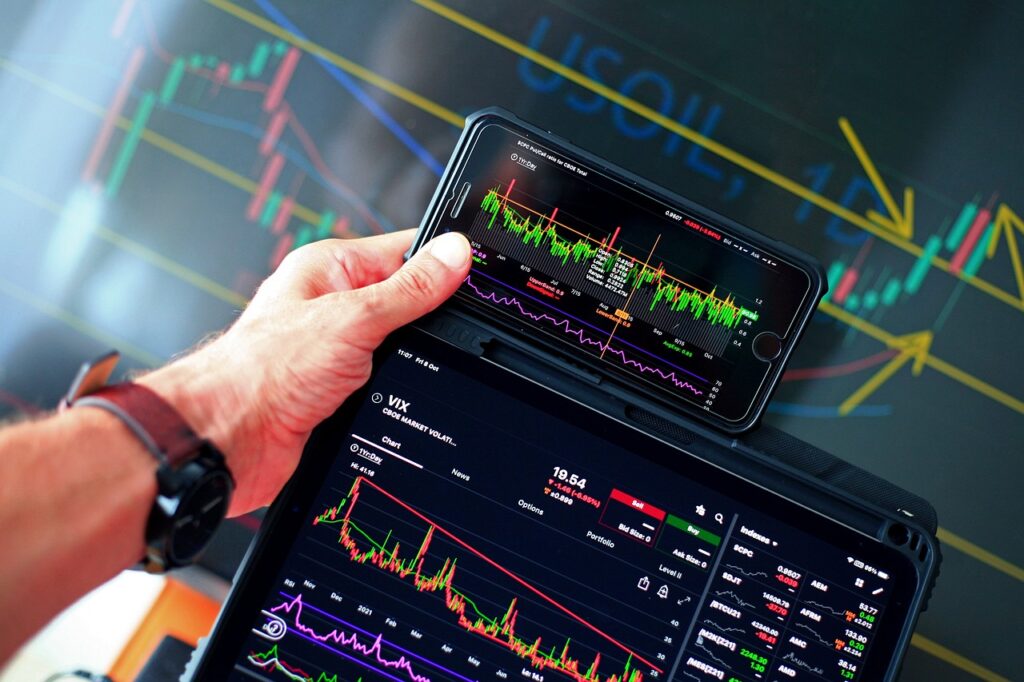In the fast-paced world of trading, staying ahead of the competition and maximizing trading success requires leveraging the transformative power of automation tools. These innovative solutions have revolutionized the way you can operate, providing you with efficient and effective solutions that can significantly impact your trading outcomes. By automating various aspects of your trading process, you will find a host of benefits that enhance efficiency, accuracy, and opportunities.
For example, you now have the ability to streamline your workflows and reduce manual efforts by utilizing automated solutions. For example, with automated trade execution, you will be able to enter and exit positions swiftly, eliminating the delays and potential errors associated with manual order placement. You can also set predefined rules and conditions, allowing you to automatically execute trades based on your specified parameters. By fine-tuning strategies and optimizing trade parameters, you can increase the likelihood of favorable outcomes.
Real-time market monitoring is another crucial aspect of trading success, and automation tools excel in this area. They give you the ability to track multiple markets simultaneously, delivering up-to-the-minute data, charts, and indicators. By providing access to vast amounts of historical and real-time market data, you are now better equipped with valuable insights and analysis, helping you make informed decisions.
Data analysis and strategy optimization are also benefits you will find because they use advanced algorithms to analyze vast datasets, identify patterns, trends, and correlations that may elude human traders.
Furthermore, risk management is also an important component of trading success, and you can incorporate risk management measures into your strategy, such as setting stop-loss orders, trailing stops, and position sizing rules. Automation tools diligently execute these risk management measures, ensuring that trades are managed according to predetermined parameters, reducing the potential for losses when trading.
Popular Automation Tools for Trading
Automation software has emerged as invaluable assets for traders seeking to optimize their strategies and outcomes. These advanced software applications and platforms have revolutionized the way you can operate, empowering you with efficient and effective tools to navigate the complexities of financial markets. Among the wide array of tools available, several popular options have gained recognition for their capabilities and features. Here are some of the key tools that can contribute towards your trading success:
- Algorithmic Trading Software: Platforms such as MetaTrader, NinjaTrader, and TradeStation offer algorithmic trading capabilities with advanced charting, backtesting, and execution features.
- Robo-Advisors: Robo-advisors automate the investment process by using algorithms to create and manage diversified portfolios based on individual risk profiles and financial goals.
- Automated Trading Bots: Cryptocurrency trading bots, such as HaasOnline and Cryptohopper, execute trades based on predefined rules and indicators. Additionally, these trading bots give you the opportunity to trade candlestick patterns which you can use to predict particular price movement in the market and potentially find further trading success.
Benefits of Automation Tools in Trading
Automation tools have brought forth a new era of trading, providing you with a myriad of benefits that can significantly impact your success in the financial markets. By harnessing the power of technology and advanced algorithms, these tools have transformed the way trading is conducted, providing you with enhanced efficiency, accuracy, and opportunities. Here are some of the key benefits that you will find by utilizing these tools:
- Enhanced Efficiency: Automation tools eliminate the need for manual execution of trades and market analysis, allowing traders to focus on higher-level strategies and decision-making.
- Increased Accuracy: By removing human emotions and biases from trading decisions, automation tools can execute trades based on predefined rules consistently and without hesitation, leading to more accurate and disciplined trading.
- 24/7 Market Monitoring: Automation tools can continuously monitor the markets and execute trades even when traders are not actively present, ensuring opportunities are not missed and enabling round-the-clock trading.
- Backtesting and Optimization: Many automation tools provide features for backtesting and optimizing trading strategies. Traders can test their strategies against historical data, identify strengths and weaknesses, and make data-driven improvements.
- Diversification: Automation tools allow traders to diversify their portfolios and trade multiple markets simultaneously. This diversification can help reduce risk and increase potential returns.
Challenges and Risks of Using Automation Tools in Trading
While these instruments have many benefits in the world of trading, it is important to be aware of the potential pitfalls involved in using them. If you navigate these potential risks then you will be able to make the most of these powerful tools. Here are some of the key challenges and risks:
- Technical Issues
- Over-Reliance on Automation
- Inadequate Strategy Development
- Market Volatility and Uncertainty
- Risk of Technology Failures
- Data Quality and Integrity
- Regulatory and Compliance Considerations
In order to mitigate the risks and overcome these challenges, you must engage in careful planning, continuous monitoring, and adapting your strategies as needed. If you approach automation tools with a proactive and informed mindset, you can effectively mitigate these risks and harness the benefits of these time-saving tools to drive your trading success.
Best Practices for Trading Success with Automation Tools
To give you the best opportunities to find trading success while using these tools, it is important to follow best practices that allow you to maximize their effectiveness and minimize any potential pitfalls. Here are some best practices to consider:
- Thoroughly Understand the Automation Tools
- Develop a Robust Trading Strategy
- Start with Simulated Trading
- Monitor and Analyze Performance
- Regularly Update and Optimize Strategies
- Maintain Risk Management Measures
- Keep Learning and Stay Informed
- Maintain Realistic Expectations
Implementing these best practices outlined above is crucial to navigate the challenges and mitigate risks associated with these unique tools. You should strike a balance between automation and human intervention, recognizing that automation tools are there to support decision-making rather than replace it entirely. Giving yourself realistic expectations and a long-term perspective is vital, as trading success is not solely determined by the tools used but also by your knowledge, skills, and ability to adapt to changing market dynamics.
Regularly monitoring and analyzing the performance of automation tools is vital to identify areas for improvement and make necessary adjustments. By reviewing key metrics such as win rate, average profit/loss, and drawdowns, you can refine your strategies and optimize the tools’ effectiveness. Additionally, staying informed about the latest market trends, technological advancements, and industry news allows you to adapt your automation software tools to evolving market conditions effectively.













